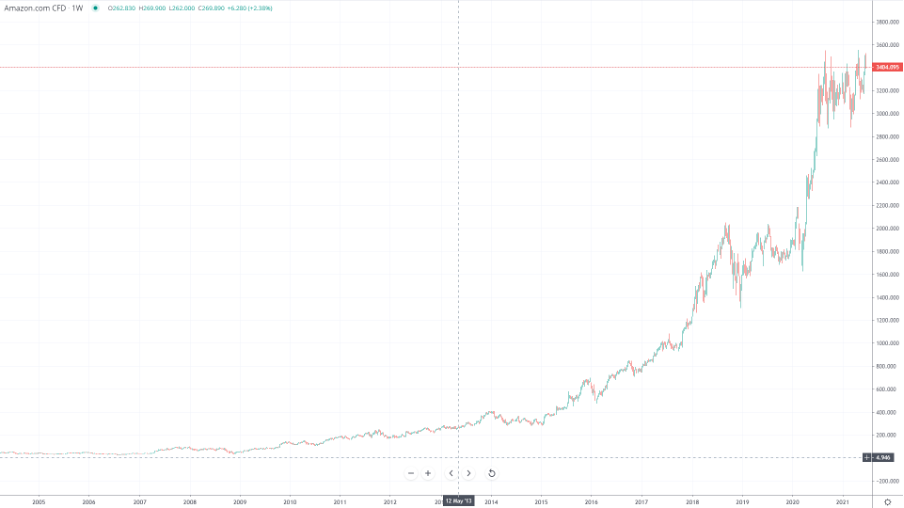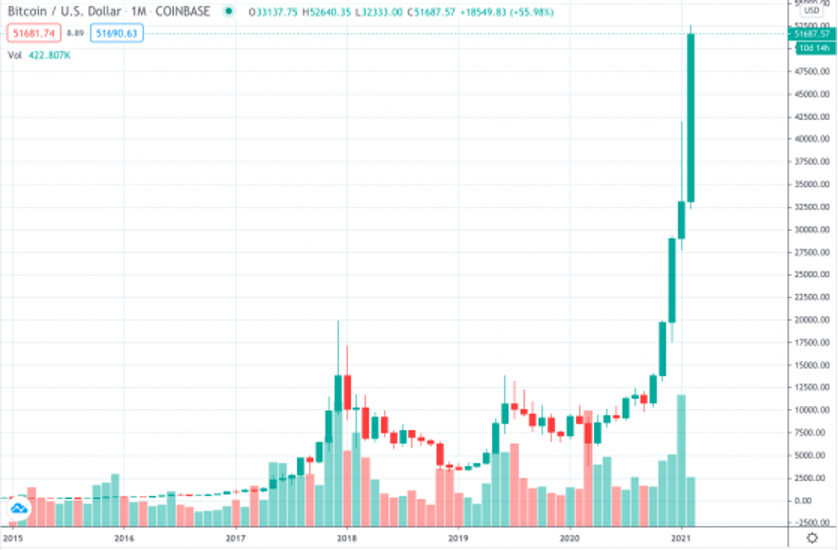Just like during the dot-com era, the cryptocurrency market is experiencing its own bubble and bust cycle. By focusing on core values and providing real value to the ecosystem, cryptocurrencies like Bitcoin and Ethereum have weathered the storm. The lessons learned from the dot-com bubble can help us identify which cryptocurrencies are likely to survive and thrive in the long term.
In the early 2000s, we saw the rise of Web 2.0, which was characterized by the development of social media, cloud computing, and other interactive web applications. We are now witnessing the emergence of Web 3, which is set to take the internet to a whole new level. The similarities between the early days of the internet and the current state of Web3 are striking, particularly when it comes to the adoption curve.
It was the late 1990s, and the internet was the new frontier. Everyone wanted to get in on the action, and many companies were launched to take advantage of this new technology. The dot-com bubble was in full swing, and companies were going public left and right, with sky-high valuations. But as the bubble grew, so did the risk, and many of these companies were not built to last.
However, amidst the chaos, a few companies stood out. They were able to survive the burst of the dot-com bubble and went on to become some of the most successful companies in the world.
It is worth reminding that Amazon was one of these companies. Founded in 1994 as an online bookstore, Amazon survived the dot-com bubble burst by focusing on its core business: customer service. The company’s founder, Jeff Bezos, had a vision of creating a company that was customer-centric, and he believed that if he could make customers happy, the profits would follow.
And he was right. Amazon went on to become the largest online retailer in the world, with a market capitalization of over $1.6 trillion. The company’s success can be attributed to its ability to adapt to changing markets, and its willingness to take risks.

During the dot-com bubble, many companies were launched with little regard for their underlying business models, and investors were pouring money into companies with little to no revenue or profitability. When the bubble burst, these companies were unable to survive, and many went bankrupt.
Warren Buffett was a vocal opponent of internet companies, particularly in the early 2000s. He invested in Amazon much later, when it had already gone up 20,000%.
Cut to today, Buffett is still a strong critic of cryptos, including Bitcoin. The statements he makes about these virtual digital assets are very similar to the ones he made about internet companies 20 years ago. He claims to not comprehend cryptos, accuses them of being based on mystical reasoning, and so forth.
However, the companies that were able to survive were the ones that had a strong foundation in their core business. They were able to weather the storm of the dot-com bubble burst by staying focused on their core strengths and values, adapting to changing markets, and investing in new technologies.
Just like during the dot-com revolution, there are many Web3 and crypto companies with a strong foundation and a focus on their core strengths and values. These companies and cryptocurrencies are the ones that are most likely to survive and thrive in the long term.
in early 2022, the crypto market experienced a major downturn, with many cryptocurrencies losing a significant amount of their value. This market downturn was attributed to factors such as increasing regulatory scrutiny, concerns about the environmental impact of mining cryptocurrencies, and a general shift in investor sentiment.
The token boom, also known as the cryptocurrency bull market of 2021, refers to a period of time in which the value of many cryptocurrencies skyrocketed to unprecedented levels. This boom was largely driven by a combination of increased mainstream adoption, speculation, and hype.

During this time, the market capitalization of cryptos reached an all-time high, with the total value of all cryptocurrencies surpassing $2 trillion in April 2021. Many tokens saw massive price gains, with some experiencing increases of thousands of percentage points.
The reasons for the token boom were multifaceted. Increased mainstream adoption of cryptocurrencies, driven in part by the COVID-19 pandemic and the resulting economic uncertainty, contributed to the increase in demand for cryptocurrencies. Additionally, the entrance of institutional investors, such as major financial institutions and corporations, into the cryptocurrency market added legitimacy and increased demand.
However, speculation and hype were also significant factors driving the token boom. Many investors were drawn to cryptocurrencies based on promises of quick profits and the potential for exponential price gains. This led to an influx of inexperienced investors, often referred to as “retail investors,” into the market.
The hype surrounding cryptocurrencies also led to the creation of many new cryptocurrencies, often referred to as “altcoins,” that lacked any real underlying value or use case. Many of these altcoins saw massive price gains in a short period of time, only to experience significant price drops as the market turned.
In contrast, cryptocurrencies with a strong foundation, such as Bitcoin and Ethereum, saw their values rise steadily over time due to their established use cases and widespread adoption. These cryptocurrencies also have a strong community of developers and supporters who are constantly working to improve and innovate the technology.
As the market began to turn in early 2022, many of the hyped-up cryptocurrencies that lacked a strong foundation and real use cases saw their values plummet, with some losing as much as 90% of their value. Meanwhile, cryptocurrencies with a strong foundation and a focus on providing value to the ecosystem, such as Bitcoin and Ethereum, were able to weather the storm and recover more quickly.
Similarly, XRP, developed by the founders of Ripple, continued growing – in 2017, XRP’s value was $0.006. Fast forward to 2023, and XRP has surged to above $0.35, marking an impressive increase of over 6,000%. The fact that it is utilized on the Ripple network to enable exchanges of various types of currencies, such as fiat currencies and major cryptocurrencies, the underlying value kept the coin growing. The same is with Cardano, Solana, Litecoin, Tether, Binance Coin, Avalanche, etc. Other cryptocurrencies, such as Chainlink and Polkadot, are also seen as promising due to their innovative solutions and focus on providing value to the ecosystem.
On the other hand, cryptocurrencies that have little to no underlying value or use case, such as Dogecoin and Shiba Inu, are seen as likely to fail in the long term. Similarly, companies that are focused on hype and speculation rather than building a strong foundation and providing value to the ecosystem are seen as likely to fail.
Learning tokenomics is crucial for the future of investment analysis because of the significant growth in the cryptocurrency market. As of January 2022, the total market capitalization of cryptocurrencies was over $2 trillion, up from just $200 billion in early 2020. Additionally, the number of unique crypto wallet addresses has increased by 74% year-over-year, reaching over 698 million by the end of 2021.
The level of adoption of a cryptocurrency is a critical factor that investors should consider before investing in a particular digital asset. The higher the adoption rate, the more widely accepted the cryptocurrency is and the more likely it is to have a positive impact on its value. The adoption of Ethereum has been steadily increasing over the years, with over 200,000 DApps currently on the platform. This has led to a rise in the value of Ethereum, with its market capitalization reaching over $200 billion in 2021.
And finally, Investors should research the technology behind a cryptocurrency and understand its potential for future development. This can help them evaluate whether the cryptocurrency has long-term potential. Eg: Smart contracts enable the creation of decentralized finance (DeFi) applications, which allow users to borrow, lend, and trade cryptocurrencies and other digital assets without the need for intermediaries like banks. As of February 2023, the total value locked in DeFi applications built on Ethereum has reached over $100 billion USD, according to data from DeFi Pulse.This shows the growing potential and proof of long-term value for the DeFi application.
Going back to the dot-com revolution and drawing some parallels, it is worth recalling that Warren Buffett’s delay in taking action resulted in a missed opportunity to earn an additional $765 billion in profits. Despite the potential for returns of up to 76,601%, he ultimately achieved a maximum return of only 730%. This highlights the importance of timely decision-making in order to maximize potential profits in investment analysis.
Hence, to sum up, investors who analyze the factors that led to the dotcom bubble burst and implement the “survival of the fittest” principle in the crypto market can make sound investment choices, as the risk-reward ratio favors them greatly. This can lead to profitable crypto investments for those who make timely decisions. By understanding the technology behind a cryptocurrency, the level of adoption, and the regulatory landscape, investors can navigate the volatile market with more confidence and increase their chances of long-term success.
